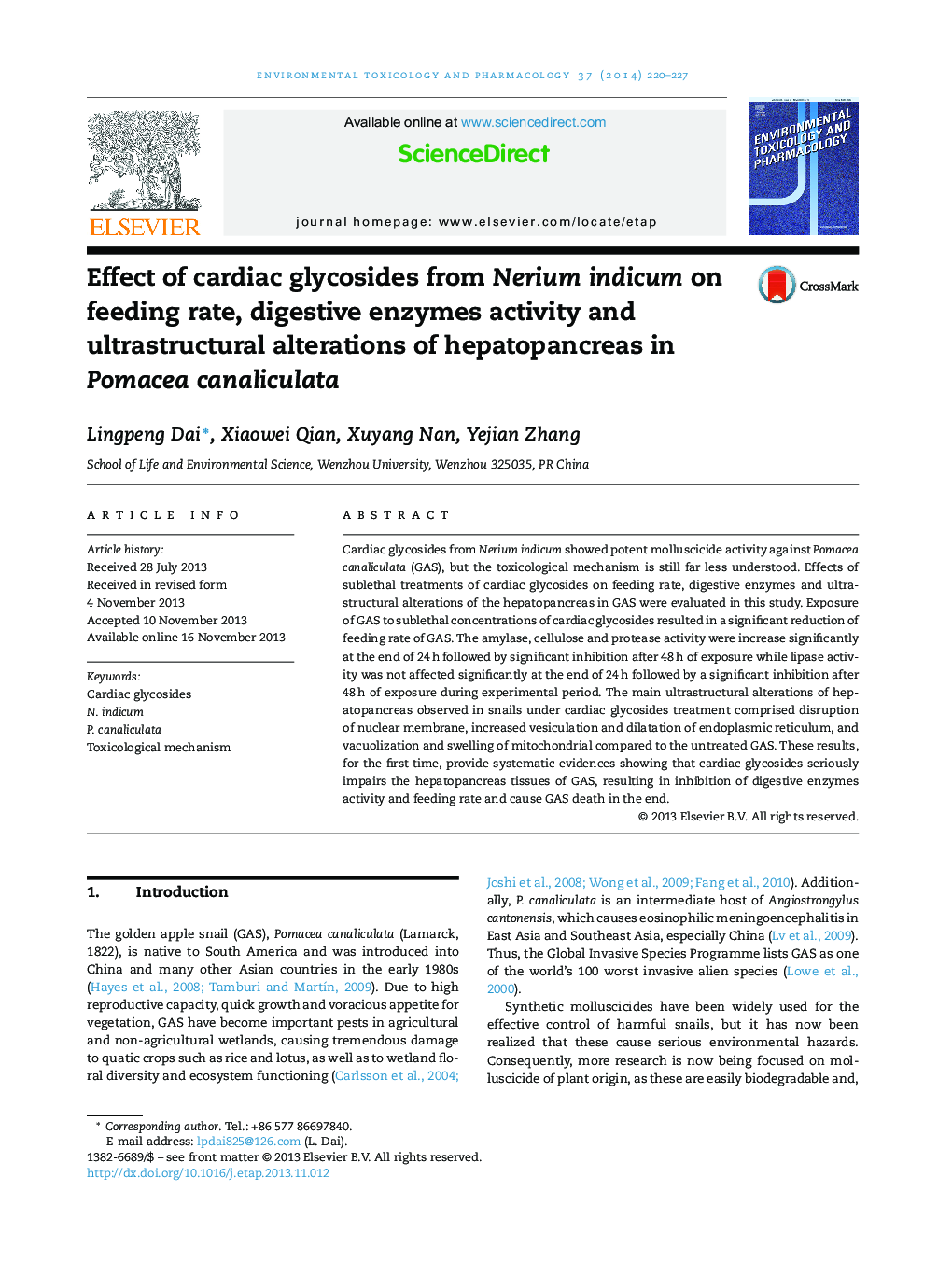| Article ID | Journal | Published Year | Pages | File Type |
|---|---|---|---|---|
| 2583993 | Environmental Toxicology and Pharmacology | 2014 | 8 Pages |
•Cardiac glycosides inhibit feeding rate and digestive enzymes activity of GAS.•Cardiac glycosides increased dilatation of endoplasmic reticulum.•Cardiac glycosides caused vacuolization and swelling of mitochondrial.•Cardiac glycosides affect vital digestive process and lead to the death of GAS.
Cardiac glycosides from Nerium indicum showed potent molluscicide activity against Pomacea canaliculata (GAS), but the toxicological mechanism is still far less understood. Effects of sublethal treatments of cardiac glycosides on feeding rate, digestive enzymes and ultrastructural alterations of the hepatopancreas in GAS were evaluated in this study. Exposure of GAS to sublethal concentrations of cardiac glycosides resulted in a significant reduction of feeding rate of GAS. The amylase, cellulose and protease activity were increase significantly at the end of 24 h followed by significant inhibition after 48 h of exposure while lipase activity was not affected significantly at the end of 24 h followed by a significant inhibition after 48 h of exposure during experimental period. The main ultrastructural alterations of hepatopancreas observed in snails under cardiac glycosides treatment comprised disruption of nuclear membrane, increased vesiculation and dilatation of endoplasmic reticulum, and vacuolization and swelling of mitochondrial compared to the untreated GAS. These results, for the first time, provide systematic evidences showing that cardiac glycosides seriously impairs the hepatopancreas tissues of GAS, resulting in inhibition of digestive enzymes activity and feeding rate and cause GAS death in the end.
